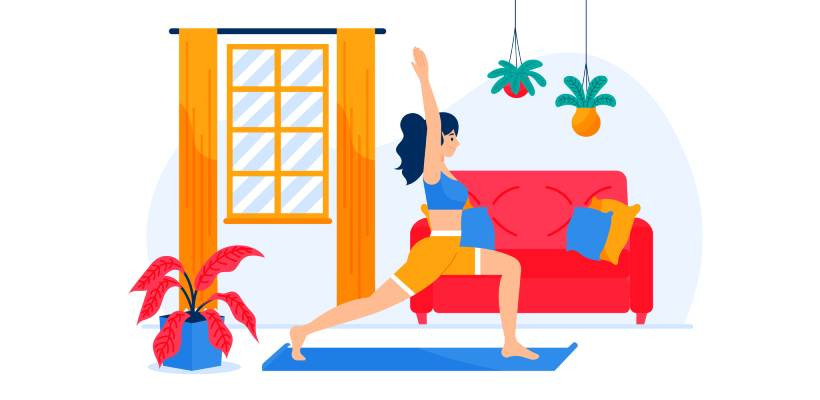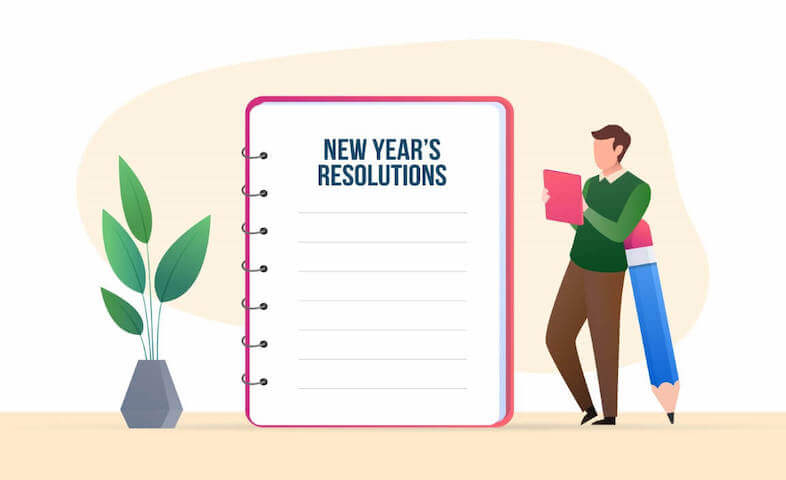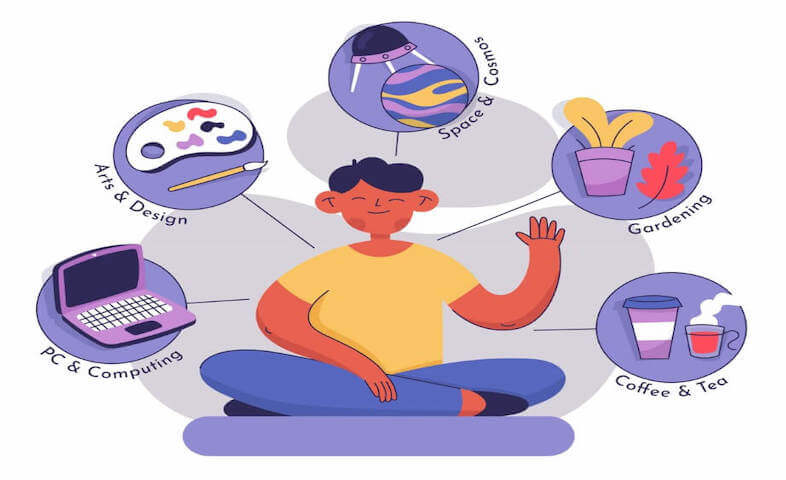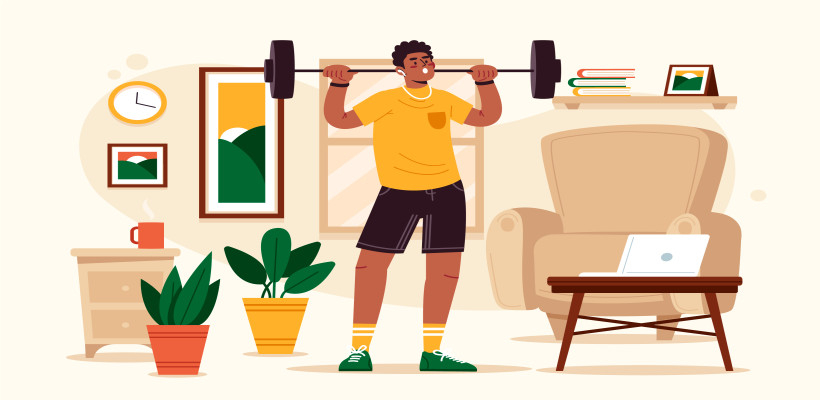Do you want to get in a solid exercise but don't have the time or access to a gym? Getting to the gym is one of the most difficult components of starting a fitness routine. With your career, significant other, and possibly even children, it's easy to see why going to the gym is low on your list of daily to-dos. If you identify with these barriers, consider working out at home.
In today's article, I'll show you 10 workouts you can do at home using only $15-20 in equipment and a door. You will efficiently exercise every muscle in your body with these workouts, ensuring exceptional results without leaving your house or getting ready to be in the gym.
For some of the exercises below, you will only need a basic pack of resistance bands that come with a door anchor. If you search for "resistance bands with door anchor" online, you can find several low-cost solutions that may be delivered to your door.
10 Best Workouts at Home
1. Bodyweight Squat
We'll start with the king of all exercises: the squat! Bodyweight squats are my favorite because they allow you to complete full-range squats much more easily than weighted squats. According to a study published in September 2019, full-range squatting enhanced the size of the glutes, knee extensors, and groin muscles much more than half-range squats. As a result, doing less weight with a larger range is preferable to doing more weight with a smaller range!
To perform a squat, begin by standing with your feet shoulder-width apart and pointing slightly away from each other. Then, gradually drop your body straight down. Continue as far as your present mobility allows, keeping your heels on the ground and your chest upright.
Return to the standing posture by doing the opposite of what you just did, and there you have it! You have successfully finished a squat!
To begin, I recommend performing three sets of 30 repetitions, resting 30 seconds to one minute between sets.
2. Split Squat
The split squat is similar to a squat in that it focuses your leg muscles, but it also helps to enhance your balance! If you know you have bad balance, I recommend keeping something nearby to grip onto for support if you need it!
To perform a split squat, begin on both knees as follows:
Now, place one foot flat on the ground in front of you. Make sure your shin is parallel to the ground.
Engage the leg muscles in your leading leg and rise to a standing position as tall as possible.
Once you've reached the top, return to the ground and repeat! If you lose your balance and have to adjust your feet to catch yourself, go back to step one and repeat until you are in the same position!
I recommend beginning with three sets of 15 repetitions on each leg, with 30 seconds to one minute rest between sets.
3. Cossack Squat
The cossack squat will be our final leg workout. The cossack squat is an excellent exercise for strengthening the hips and quadriceps. It is also a great workout for stretching your hip muscles, so if you have tight hips, try this one!
Begin by spreading your feet as far as they will go.
"Sit" down and back on one side while maintaining the other leg straight. This is when you will feel a good stretch in your lengthy leg.
Return to the starting position and repeat on the opposite side. I recommend doing three sets of ten repetitions on each side, with 30 30-second to one-minute break in between.
4. Push up
Moving on to the upper body, we have a tried-and-true exercise: the push-up! The push-up is one of the best upper-body exercises because it strengthens your chest, triceps, shoulders, and abs!
Many individuals find push-ups tough, so as we cover how to do them, I'll suggest a simple tweak you can do if you find them particularly challenging.
Begin by lying down on your stomach on the floor or on a sturdy table. When you're at the bottom, position your arms so that your forearms are perpendicular to the ground or table. Your arms should be at a 45-degree angle to your torso.
Push yourself up until your arms are straight, then drop yourself down.
It's critical to remember that your body should remain as straight as it was on the ground. To guarantee proper form, do the push-ups from a chair or table if you're rolling off the ground!
5. Resistance Band Shoulder Press
Following the upper body exercises, we will execute a resistance band shoulder press. Pushing overhead is a fundamental human movement because it is something you do numerous times a day without even realizing it. Aside from that, the shoulder press is great for building strong shoulders, triceps, and upper traps.
To begin, attach handles to the band and step on it in the center. Raise your hands to shoulder width, with the bands on the outside of your arms.
Push straight up and back, reaching as high as your hands will allow.
Return the bands to their initial position slowly.
Choose a weight that you can do 15-20 repetitions of for three sets.
6. Resistance Band Lat Pulldown
The resistance band lat pulldown is another excellent upper-body exercise that targets the latissimus dorsi, biceps, and rear shoulder muscles. If you want to have a smaller waistline, having strong lat muscles is one of the greatest ways to achieve so, as these are the muscles that give you that "v-shaped" upper body!
Position the door anchor just above the top hinge of a door to perform a resistance band lat pulldown. Feed the band(s) through the loop, then take a step back and lean forward so your arms are stretched overhead. When your arms are fully extended, make sure the band is taut.
Pull your shoulders down towards your hips and then pull with your arms the rest of the way. This technique is a little difficult at first, but with repetition, you'll get the hang of it!
You should feel the back muscles that rest on top of your rib cage working hard at the bottom of the action.
Choose a weight that you can do 15-20 repetitions of for three sets.
7. Resistance Band Row
Another workout that targets your back muscles, notably your lats, rhomboids, lower traps, and rear shoulders, is the resistance band row. This exercise will also give you some bicep work. One of the other important advantages of rowing is that it helps to improve your posture, which is beneficial if you suffer from back discomfort of any kind!
Begin by inserting the door anchor so that it is level with your tummy. Feed the band(s) through the loop and take a step back until the band is taut when your arms are fully extended.
Squeeze your shoulder blades together and then pull your arms all the way to your tummy. It is critical that you press your shoulder blades together first! Make sure you finish this step!
Return your hands to their extended position slowly, relax your shoulder blades, and repeat!
Choose a weight that you can do 15-20 repetitions of for three sets.
8. Resistance Band Twist
Our final three exercises on this list will be ab exercises. The abs are vital for looking beautiful as well as helping to relieve back discomfort and keep our balance when moving.
The first exercise will be a resistance band twist that will target your obliques (the abs on your sides). Developing these muscles can allow you to stabilize your body side to side and during twisting, both of which are common causes of back pain!
To begin, place the door anchor at around shoulder height, feed the band(s) through the loop, and attach only one handle to it. Finally, turn 90 degrees to the door and stretch your arms in front of you.
Keep your arms straight and spin your entire upper body away from the door until you can no longer turn any further. When you turn to the right, your right side obliques should be working hard.
Return to the starting position slowly and repeat!
Choose a weight that allows you to perform 10-15 repetitions on each side for three sets.
9. Roll-ups
The roll-up is a pilates exercise that has gained popularity. It's an ab exercise that will burn your abs while also improving your lower body mobility. The goal of this ab exercise is to take away your ability to utilize your legs for assistance and place all of the strain on your core.
Lay totally flat on the ground with your legs extended and arms stretched overhead to prepare for a roll-up.
To do the exercise, picture curling your upper body vertebrae by vertebrae towards your feet. Continue to extend forward until you are perpendicular to the floor and you can touch your toes.
Return to a lying position by gradually lowering yourself, vertebrae by vertebrae. The act of "rolling" is important in this exercise since it prompts your body to activate your abs as much as possible.
Perform 15-20 repetitions of this exercise for three sets of 15-20 repetitions.
10. Knee Tucks
The knee tuck is similar to a reverse roll-up, except it focuses on your lower abs more. Whereas the purpose of the roll-up is to keep your legs from helping, the goal of the knee tuck is to keep your upper body from helping as much.
The knee tuck is similar to the roll-up in that you lay flat on the ground with your legs out long, but this time you can rest your arms down by your side.
Begin by bending your knees and curling them up to your chest to do the knee tuck. By flexing your abs, you should feel your lower back rounding.
To complete the rep, flatten your back to the ground, extend your legs out, and set them back down.
Try to accomplish 15-20 repetitions of this exercise for three sets.
If this exercise causes low back pain, position a pillow beneath your back for support.
Conclusion
With the ten exercises outlined above, you can be sure to obtain a full-body workout at home that will challenge you and build your body symmetrically.
The National Institute of Health conducted a large study on how frequently you should exercise each week. They discovered that doing out 1-2 times per week increased the chance of injury, most likely due to a lack of practice, and that people should exercise 3 or more days per week.
So, try to complete this workout at least three times per week, and if you are patient and consistent, you will see tremendous results in your body shape!







Commnets 0